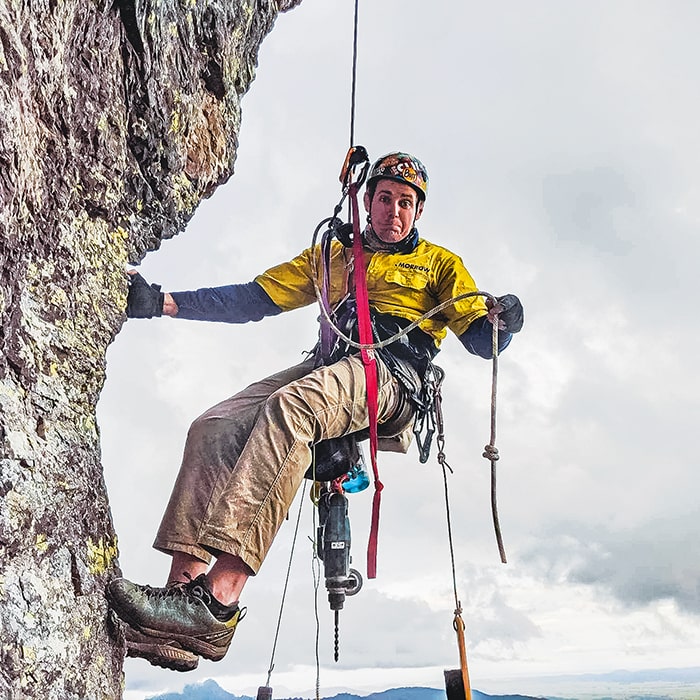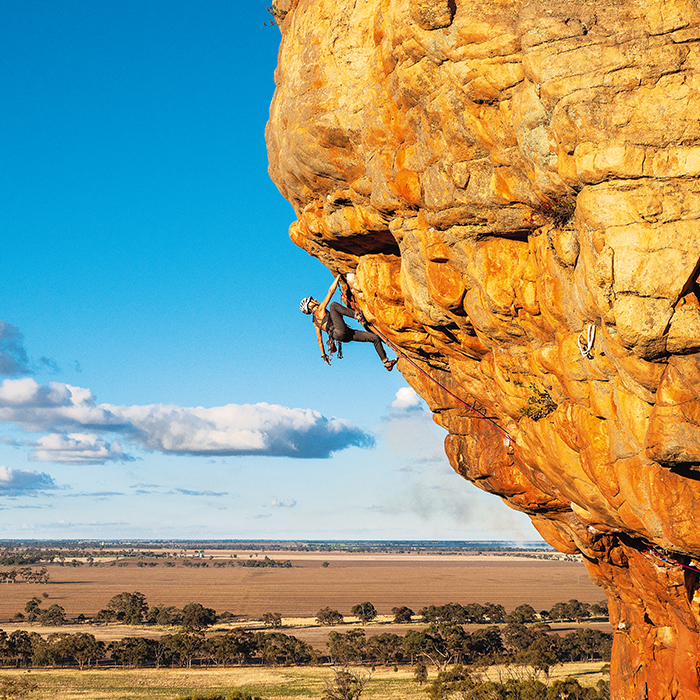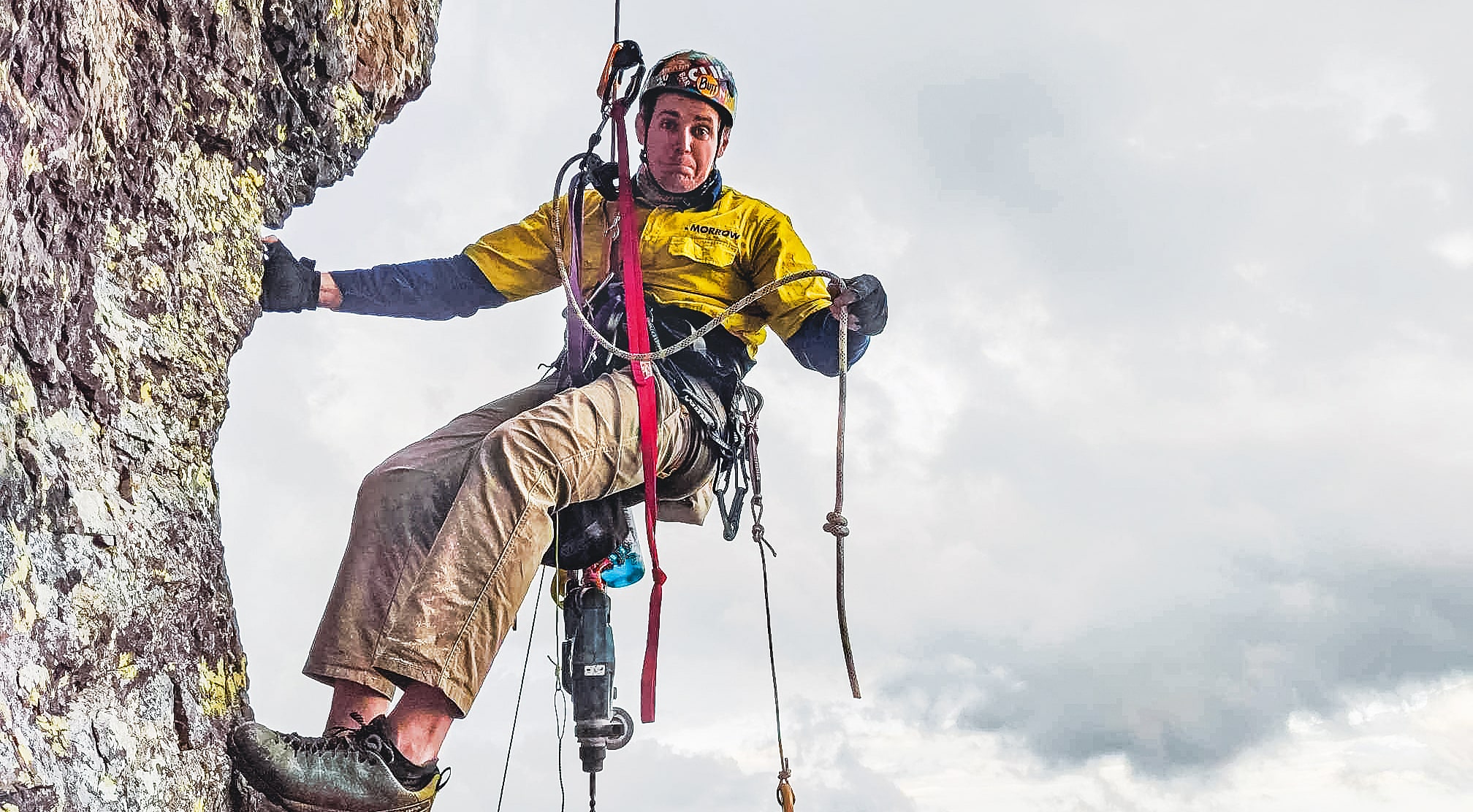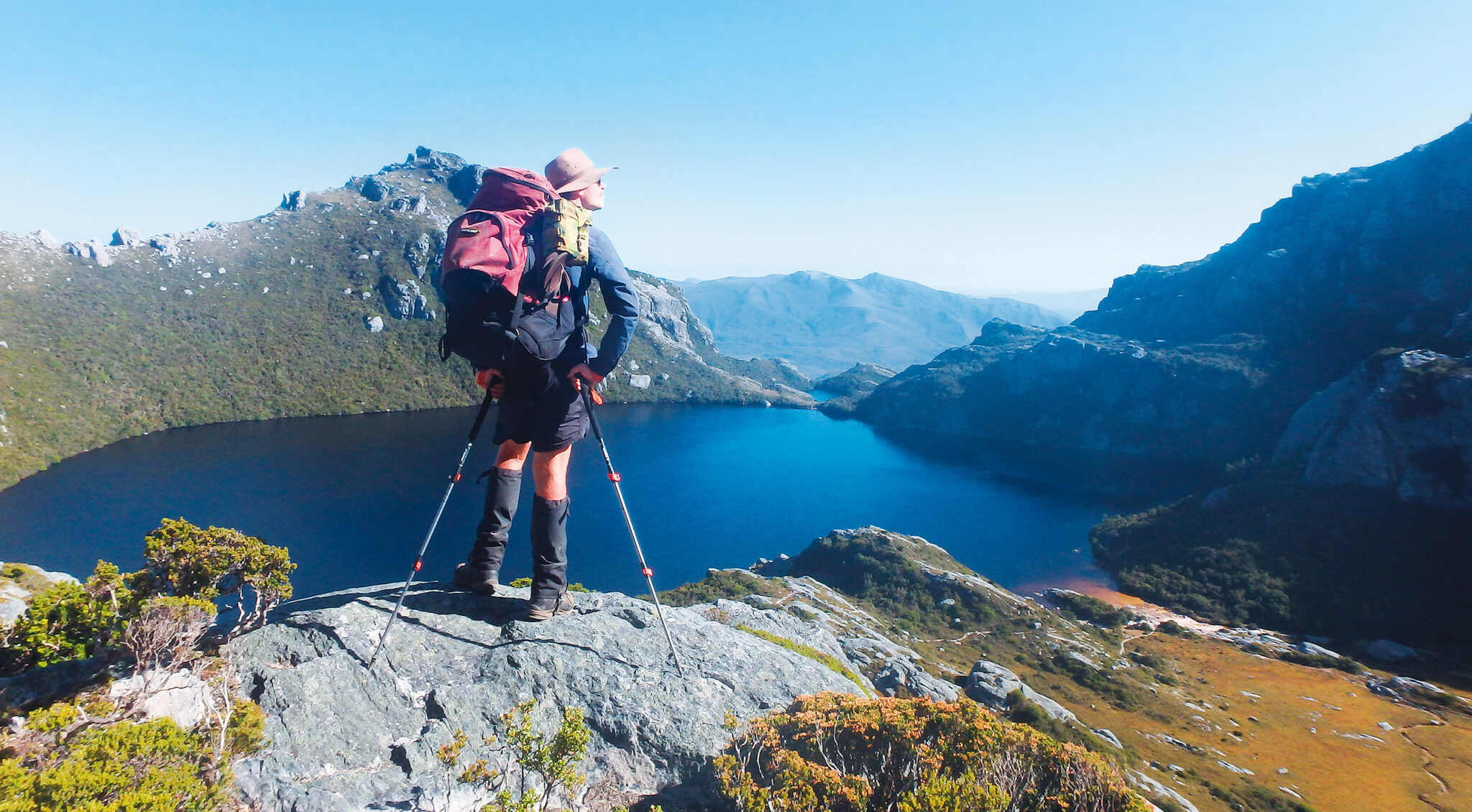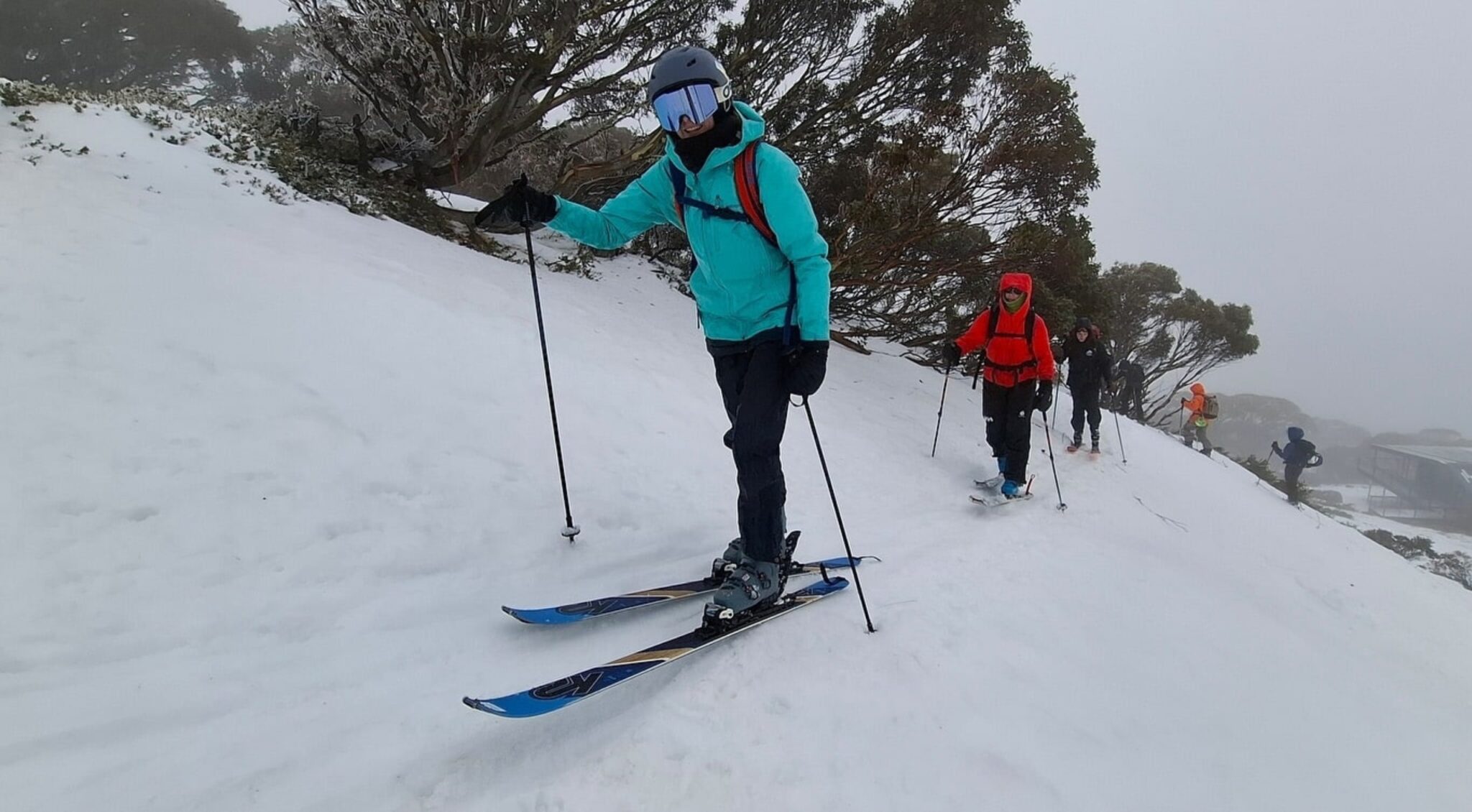Avoiding Climbing Fiascos
Climbing can be loads of fun, but things can quickly, and catastrophically, go wrong. Wild Earth Ambassador Nathan McNeil shares some tips to keep you safe at the crags.
Nathan at the end of his rope … this time with a stopper knot. Photo credit: Alex Mougenot.
(This piece originally featured in Wild #194, Summer 2024)
“Just be careful, we don’t want any accidents.” These were the last words Sam Cujes said to me before I did exactly the opposite, rapping off the end of my rope four metres off the deck and fracturing my sacrum in two places. We were developing new routes and a were mile from anywhere; if it wasn’t for the knowledge and experience of those around me, it could’ve ended in a worse result. It just goes to show that shit can happen, anywhere, anytime. While I consider myself more often than not to be one of the safer members in most groups, I’ve found that in certain instances, especially involving rope safety, more can meet the eye and extra precaution is required. The problem is that it takes experience and time in those particular zones (ie fatigue, or high-risk, unusual rope jiggery-pokery, or so on) to be able to see the warning signs or to avoid misreading situations that can lead to an accident. What’s more, while not all mishaps have dire consequences, even seemingly minor ones, if stacked on top of each other, they can lead to the scales of risk and safety being tipped to the wrong side, a situation that could have been averted had the alarm bells rung earlier.
So, with that said—and having been inspired by all the fiasco stories in Wild’s last issue—here are a few tips to help you avoid a climbing fiasco of your own, tips that one day might just save your arse … literally!
1. Tie your stopper knots
Stopper knots are a staple in climbing, and for good reason. It’s the most basic form of rope safety; a simple knot can 100% save your life, or at least from injury. Here’s my tip on stopper knots, no matter the situation, no matter the rappel, no matter your confidence: Tie. A. Stopper. If it becomes blind practice, you won’t even have to think about it for that time when it might save your life.
2. Take a moment
Before putting yourself into a situation dependant on safety and accuracy, take a moment to check your systems. Are your biners locked? Is your PAS (Personal Anchor System) connected? Are you through both rings? Have you tied a stopper? All the basics of personal rope safety play a pivotal role in a safe and successful day out.
3. Double check
Now that you’ve tied your knots and checked your systems, it’s time to double check everything to make sure you didn’t miss a crucial safety item. When I do my double checking, I usually do it verbally out loud so that my partner not only feels that I am keeping us both safe, they can also be involved in checking the system. It gives them the opportunity to chime in, too, if they see something wrong or to point out anything missing. If I’m by myself, I will still do this out loud anyway; it helps to clarify what I’m doing. It’s kind of like when meeting someone new; if you say their name out loud, you’re twice as likely to remember it when you bump into them at the bar ten minutes later.
4. Honest Communication
Whether using ropes or not, always air concerns with your partner when you feel unsafe or at an increased risk. Everyone’s level of acceptable risk is different, and it’s best not to remain silent and push past your own. Having an open line of communication with your partner/s is beneficial in that you may alert them to a risk they hadn’t considered, or you can talk over the risks and break them down to decide if the risk is acceptable or not. I’ve been in situations where I wasn’t feeling my best and my acceptable risk level at the time was below that of the group, so an extra measure of safety was included to keep me feeling comfortable and willing to press on. Don’t let ego or pressure get in the way of your judgement.
5. Be prepared
There’s nothing worse than someone being underprepared for the adventure they are undertaking. Be it weather, equipment, experience or skills, the quickest way to failure or accident is not being prepared. There’s an old saying that always rings true in a time of need: “You’d rather be tripping over it than looking for it.” That’s especially true when you’re up against Mother Nature, or the forces of gravity. Know your gear, study the forecast, work on your skills, and do the work that it takes to up your game in order to navigate the outdoors successfully and without incident.
If you liked this piece, you should subscribe to the print mag. Only a fraction of the great stories we run in the mag make it to our website; if you want to read them, head to subscribe.wild.com.au.

